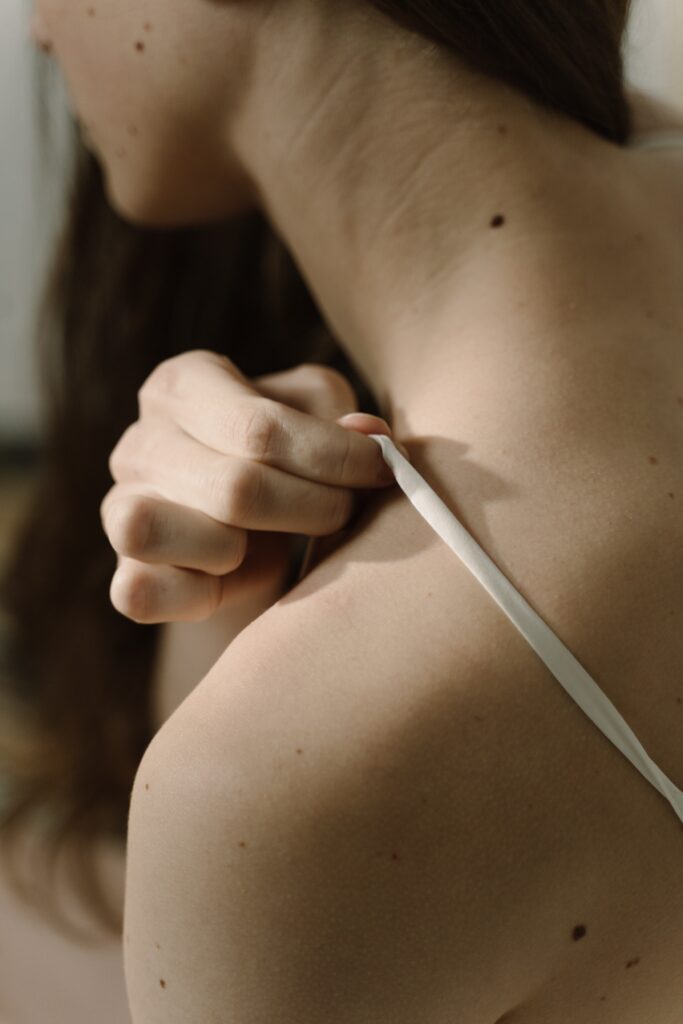Moles And Your Skins Health

Moles are a common type of skin growth, typically appearing as small, dark spots on the skin. They can vary in shape, size, and color, and can appear anywhere on the body. While most moles are harmless, some may be a sign of skin cancer. In this blog, we will discuss the importance of monitoring moles, skincare tips and how they can affect your skin’s health.
What are moles?
Moles, also known as nevi, are a type of skin growth that occurs when pigment cells (melanocytes) grow in clusters. They can be raised or flat, and may be smooth or rough to the touch. Moles can be present at birth or can develop over time, and may change in appearance over time.
Why are moles important to monitor?
While most moles are harmless, some may be a sign of skin cancer. Skin cancer is the most common type of cancer in the United States, and it can be deadly if not caught and treated early. Monitoring your moles and checking for any changes is an important part of skin cancer prevention.
When monitoring your moles, it is important to look for the ABCDEs of melanoma:
- Asymmetry: one half of the mole does not match the other half.
- Border: the edges of the mole are irregular, blurred, or notched.
- Color: the mole is not uniform in color and may include shades of brown, black, or tan.
- Diameter: the mole is larger than 6mm (about the size of a pencil eraser).
- Evolving: the mole has changed in size, shape, color, or elevation, or has developed new symptoms such as bleeding, itching, or crusting.
If you notice any of these signs, or if a mole looks different from your other moles, you should see a dermatologist for evaluation.
How can I prevent skin cancer?
In addition to monitoring your moles, there are several steps you can take to reduce your risk of developing skin cancer:
- Wear protective clothing, including a hat and sunglasses, when you are outside.
- Use a broad-spectrum sunscreen with an SPF of 30 or higher every day, even on cloudy days.
- Seek shade during peak sun hours (10 a.m. to 4 p.m.).
- Avoid tanning beds and other artificial sources of UV radiation.

Regular self-examinations are also an important part of skin cancer prevention and healthy skin. By examining your skin every month along with practicing sink Care tips, you can catch any changes or new moles early on. It is recommended that you use a full-length mirror to examine your body, starting with your head and working your way down to your toes. Don’t forget to check your scalp, the soles of your feet, and between your fingers and toes.
If you have a lot of moles or a family history of skin cancer, you may be at a higher risk for developing skin cancer. In this case, you may want to consider getting a skin cancer screening from a dermatologist. A screening involves a full-body exam to check for any suspicious moles or other skin growths.
In addition to monitoring your moles and getting regular screenings, maintaining a healthy lifestyle and skincare routine can also help reduce your risk of developing skin cancer. Eating a healthy diet, exercising regularly, and avoiding smoking can all help improve your overall health and reduce your risk of cancer.
It’s also worth noting that while most moles are benign, some types of moles may be more likely to develop into cancerous growths. For example, dysplastic nevi are moles that are larger than average and have irregular borders and uneven coloring. People with many dysplastic nevi are at an increased risk of developing melanoma, the deadliest form of skin cancer. If you have many moles, especially if they are larger or irregular in shape, it’s important to talk to your doctor about your risk for skin cancer.
In addition to dysplastic nevi, other factors that may increase your risk of skin cancer include a history of sunburns, a weakened immune system, and a family history of skin cancer. If you are at an increased risk, your doctor may recommend more frequent skin cancer screenings or other preventive measures.
It’s important to note that not all skin cancer develops from moles. Other types of skin cancer can appear as red or scaly patches, or as sores that don’t heal. It’s important to be aware of any changes to your skin, including new growths, sores that don’t heal, or changes to existing moles. If you notice anything suspicious, see a dermatologist as soon as possible.
Monitoring your moles and getting regular skin cancer screenings, there are other steps you can take to protect your skin from the sun. For example, you can wear protective clothing, such as long-sleeved shirts and wide-brimmed hats, to shield your skin from the sun’s harmful rays. You can also seek shade during the hottest part of the day, and use a broad-spectrum sunscreen with an SPF of at least 30 on all exposed skin as part of your skincare routine.
Overall, moles can be a useful tool in detecting skin cancer, but they are just one aspect of skin health. By taking care of your skin and being vigilant about any changes, you can reduce your risk of skin cancer and maintain healthy skin.

